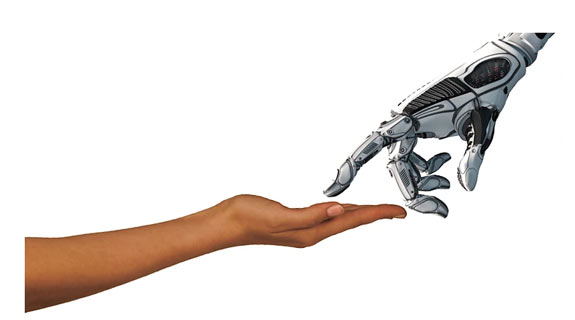
Scientists at Imperial College London and the University of Göttingen have used machine learning to improve the performance of prosthetic hands. The new self learning robotic hand interprets strong signals from brain activity to make movements more natural.
After testing their prototype on five amputees, they found that new machine learning-based control was far better at providing natural, fluid movements than the currently available technology. The researchers said the findings, which are published in Science Robotics, could spark a “new generation of prosthetic limbs.”
Professor Dario Farina, senior author of the paper from Imperial’s Department of Bioengineering, said: “When designing bionic limbs, our main goal is to let patients control them as naturally as though they were their biological limbs. This new technology takes us a step closer to achieving this.”
Current technology works by directly controlling the prosthetic motors with a few muscular signals. However, the new bionic hand, developed in collaboration with Imperial and the University of Göttingen, uses a human-machine interface that interprets the patient’s intentions and sends commands to the artificial limb.
Patients found they were able to quickly rotate the wrist and open the hand either simultaneously or separately. They also found the movements were far more natural than the conventional bionic limbs they were familiar with.
In addition to the types of function, patients could also control the speed of individual movement independently of other actions. For example, patients could turn the hand slowly but open it quickly at the same time. The researchers say this is an essential component for movements that feel natural.
Before use, the patient and bionic hand underwent training so the machine learning algorithm could ‘learn’ how to interpret their unique electronic signals. Professor Farina hopes to eliminate the need for this in future prototypes, without sacrificing personalisation to specific patients.
Professor Farina said: “The new robot bionic hand is not only more natural, but it is also superior regarding functionality in daily tasks than what’s currently available to patients. “Following this clinical study, we hope to have this available on the market for patients within three years.”
The researchers are currently working to gain greater control over the self learning robotic hand, including the ability to move individual fingers and eliminate the need for electrodes by transferring signals wirelessly within the patient’s body.









